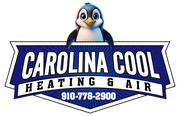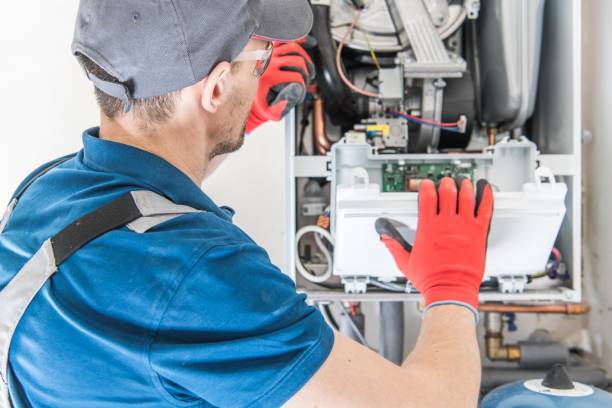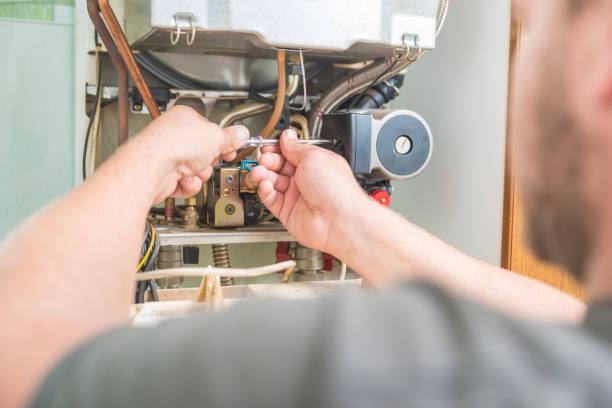When your furnace starts blowing cold air in North Carolina, it can leave your home uncomfortably chilly and affect your family’s comfort. At Carolina Cool Heating & Air, we help homeowners quickly identify why their heating system isn’t working properly and provide furnace repair solutions. Common issues like thermostat problems, clogged air filters, or blower motor problems can prevent your furnace from producing warm air.
Understanding the possible causes of a furnace blowing cold air is the first step to fixing it and keeping your home cozy. We’ll cover five main reasons your furnace may be blowing cold air and share practical tips for furnace maintenance and repair in North Carolina.
Table of Contents
Toggle1. Thermostat Issues
One of the first things to check if your furnace is blowing cold air is your thermostat. If the thermostat is not working properly, your furnace may not receive the signal to produce heat.
- Check the settings: Make sure the thermostat is set to “heat” mode and the temperature is higher than the current room temperature.
- Replace batteries: If your thermostat uses batteries, weak batteries can cause it to malfunction.
- Upgrade old thermostats: Older thermostats may not communicate well with newer furnaces, leading to issues.
Fixing a thermostat problem is usually simple, but if the issue persists, it’s best to call a professional.
2. Clogged Air Filters
A dirty or clogged air filter can prevent your furnace from blowing warm air. When airflow is blocked, the furnace may overheat and trigger a safety mechanism that shuts down the heat.
- Check your air filter: Look for dirt, dust, and debris.
- Replace regularly: Air filters should be replaced every 1-3 months, depending on usage and household conditions.
- Use the right filter: Make sure you’re using a filter recommended by the furnace manufacturer.
Regular maintenance of air filters keeps your furnace running efficiently and prevents cold air problems.
3. Pilot Light or Ignition Problems
Gas furnaces rely on a pilot light or electronic ignition to start the heating process. If these components fail, your furnace won’t produce heat.
- Check the pilot light: If it’s out, relight it following the manufacturer’s instructions.
- Electronic ignition issues: Modern furnaces use electronic ignition systems that may fail over time. If your furnace uses this, a professional should inspect it.
- Gas supply: Ensure your gas supply is turned on and there are no leaks.
Pilot light and ignition issues are common reasons for furnaces blowing cold air.
4. Dirty or Blocked Burners
Over time, furnace burners can become dirty or blocked, preventing the furnace from producing heat.
- Inspect burners: Dirt, dust, or soot can build up on the burners.
- Clean burners: Carefully clean burners or hire a professional to do it safely.
- Check for corrosion: Rusty or damaged burners can also affect performance.
Cleaning and maintaining burners ensures your furnace can produce warm air consistently.
5. Blower Motor Problems
The blower motor is responsible for pushing heated air through your home. If it’s not working properly, you may feel cold air even when the furnace is running.
- Listen for unusual sounds: Grinding or squealing noises can indicate motor issues.
- Check the motor: Ensure it’s receiving power and not overheating.
- Call a professional: Blower motor repair or replacement is complex and requires expertise.
A faulty blower motor can make your furnace inefficient and lead to cold air blowing through vents.
Other Tips to Keep Your Furnace Working Properly
- Regular Maintenance: Schedule annual furnace inspections with a trusted HVAC company like Carolina Cool Heating & Air in North Carolina.
- Clean Vents: Ensure vents are not blocked by furniture or debris.
- Check Ductwork: Leaks or holes in ducts can reduce heat distribution.
Monitor Energy Bills: Sudden increases can indicate a problem with your furnace.
Final Thoughts
A furnace blowing cold air can be caused by several issues, including thermostat problems, clogged filters, pilot light or ignition issues, dirty burners, or blower motor problems. Regular maintenance and professional inspections can prevent most of these problems.
If you’re experiencing cold air from your furnace, contact Carolina Cool Heating & Air for fast and reliable furnace repair in North Carolina.
Frequently Asked Questions
Your furnace may blow cold air due to thermostat issues, clogged air filters, pilot light or ignition problems, dirty burners, or a faulty blower motor. Checking these components can often fix the problem.
Start by checking the thermostat, replacing dirty air filters, ensuring the pilot light is on, and inspecting the blower motor. If the problem persists, contact a professional HVAC technician.
Air filters should be replaced every 1–3 months, depending on usage and household conditions, to maintain proper airflow and furnace efficiency.
If basic troubleshooting like checking the thermostat, air filter, or pilot light doesn’t fix the issue, it’s best to call a licensed HVAC technician. Furnace repairs involving gas lines or the blower motor can be dangerous without expertise.
At Carolina Cool Heating & Air, we provide expert furnace repair, maintenance, and inspection services across North Carolina. Our technicians quickly identify the issue and ensure your home stays warm and comfortable.
Yes. A dirty air filter restricts airflow, causing the furnace to overheat and shut down the heat, resulting in cold air blowing through your vents.
Intermittent cold air may indicate a problem with the thermostat, blower motor, or gas supply. Professional inspection is recommended to identify and fix the root cause.




